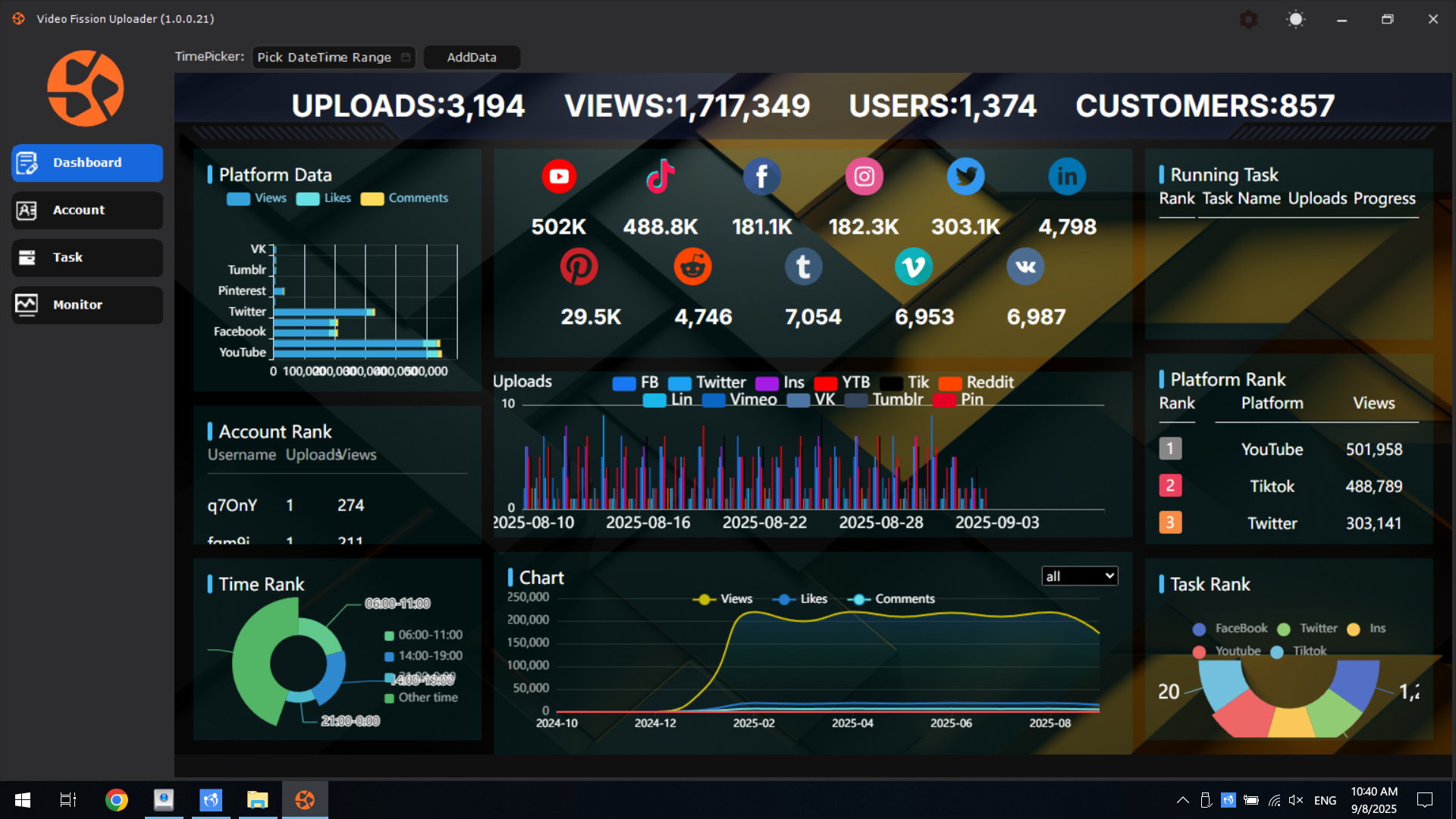Top 10 How-To Video Examples Companies Can Start Creating Today
Why Companies Can’t Ignore How-To Videos in 2025
Video consumption continues to skyrocket—recent studies show that 82% of all online traffic in 2025 is projected to be video-related. Customers no longer want to read lengthy manuals or browse endless FAQ pages. Instead, they prefer easy-to-digest how-to videos that explain concepts clearly and visually.
For companies, how-to video examples provide a direct way to educate, engage, and convert audiences. They build trust faster than text and increase retention rates by up to 95% compared to written content. Whether you’re a startup or an enterprise, investing in video tutorials today ensures long-term customer satisfaction and brand authority.
1. Product Demo Videos: Show, Don’t Tell
Product demo videos are among the most effective how-to video examples for companies. Rather than describing product features in writing, a short visual demo walks customers through real-world use cases.
For example, software companies can create step-by-step product walk-throughs to reduce onboarding friction. Hardware companies can show assembly or usage instructions. According to Wyzowl’s 2024 Video Marketing Report, 96% of people say they’ve watched an explainer video to learn more about a product or service—and 88% were convinced to make a purchase afterward.
Pro Tip: Keep product demo videos concise and focus on solving a specific customer pain point. Add captions for accessibility and multilingual audiences.
2. Onboarding & Training Videos: Scaling Employee and Customer Education
When companies rely only on documents for onboarding, users often feel overwhelmed. Onboarding videos make the process simple, repeatable, and scalable. They can be used for:
Customer onboarding: Helping new clients set up accounts or use key features.
Employee training: Teaching staff internal tools, compliance rules, or company culture.
Training videos reduce employee turnover costs by improving clarity and speeding up productivity. Research shows that companies with structured onboarding programs improve employee retention by 82%.
Pro Tip: Break training videos into short modules so learners can absorb information gradually.
3. Customer Support Tutorials: Reducing Tickets, Boosting Satisfaction
Customer support teams are often overloaded with repetitive questions. Creating short how-to videos for common issues significantly reduces support volume.
For example, instead of answering “How do I reset my password?” dozens of times a day, companies can publish a 90-second tutorial video. This not only saves time but also empowers customers to solve problems independently.
According to HubSpot, companies that integrate video into their customer support strategies see a 20% reduction in support tickets within the first six months.
Pro Tip: Add these tutorials to your knowledge base and embed them in FAQ sections.
4. FAQ Video Series: Answering Questions Before They’re Asked
FAQ videos turn frequently asked questions into easy-to-understand visual content. Instead of forcing customers to scroll through pages of text, a series of short videos quickly resolves their concerns.
For example:
A bank explaining how to set up mobile banking.
An eCommerce company showing how to track or return orders.
A SaaS brand clarifying pricing plans.
This type of proactive customer support content builds credibility and enhances the customer experience.
Pro Tip: Group FAQ videos into playlists for YouTube or embed them directly on your website’s support pages.
5. Explainer Animations: Simplifying the Complex
Sometimes, a product or service is too complex for a live demo. That’s where explainer animations shine. Animated how-to videos simplify technical topics into clear, engaging stories.
Explainer videos are especially effective in industries like finance, healthcare, and technology—where abstract ideas benefit from visual storytelling. According to research, animated explainers increase audience understanding by 74% compared to static text.
Pro Tip: Use metaphors and storytelling to help audiences grasp difficult concepts faster.
6. Industry Thought Leadership “How-To” Videos: Build Authority
How-to videos don’t have to focus only on products. Companies can also create educational thought leadership videos that answer industry-related questions. For example:
A digital marketing agency producing “How to improve Facebook ad performance.”
A manufacturing firm publishing “How to ensure supply chain resilience.”
These videos position the company as a trusted advisor, boosting credibility and visibility within the industry.
Pro Tip: Share these videos on LinkedIn and YouTube to reach professional audiences.
7. Social Media Quick Tips: Capturing Short-Form Attention
With platforms like TikTok, Instagram Reels, and YouTube Shorts dominating attention spans, companies should leverage snackable how-to videos. Quick, 15-30 second clips that demonstrate hacks, tips, or product tricks can go viral, reaching millions.
For example, a skincare brand might post “How to apply sunscreen correctly in under 30 seconds.” This type of bite-sized video content generates high engagement, especially with Gen Z and millennial audiences.
Pro Tip: Repurpose long-form tutorials into short highlights optimized for vertical video formats.
8. Behind-the-Scenes How-To Videos: Humanizing the Brand
Audiences love transparency. Behind-the-scenes videos showing how a company operates build trust and relatability. This can include:
How products are made.
How teams collaborate on projects.
How sustainability efforts are implemented.
For example, Patagonia’s “how we make our jackets” videos reinforce its eco-friendly brand values. These authentic glimpses help companies connect emotionally with customers.
Pro Tip: Keep behind-the-scenes videos authentic rather than overly polished.
9. User-Generated How-To Content: Let Customers Teach
One of the most underutilized how-to video examples is user-generated content (UGC). Encouraging customers to create their own tutorial videos adds authenticity and social proof.
For example, GoPro thrives on customer-generated videos showing “how to capture action shots.” Similarly, beauty brands often feature tutorials made by real users applying their products.
According to Nielsen, 92% of consumers trust UGC more than brand-produced content.
Pro Tip: Run contests or reward programs to incentivize customers to share their own how-to content.
10. Advanced Tutorials: AI, Integrations, and Analytics
For companies with sophisticated products, advanced how-to tutorials are essential. These go beyond basic features and show customers how to maximize product value.
Examples include:
AI-powered platforms showing how to automate workflows.
CRM tools explaining integrations with third-party apps.
Analytics dashboards teaching how to interpret customer data.
These videos are particularly valuable for enterprise clients, ensuring long-term loyalty and product adoption.
Pro Tip: Create a dedicated video series for power-users and enterprise customers.
How VideoFission Can Help Companies Scale How-To Video Creation

While knowing what videos to create is important, producing and distributing them at scale is often the biggest challenge. That’s where VideoFission comes in.
Our platform offers:
AI-driven editing tools for polished videos in minutes.
Digital human presenters for multilingual tutorials.
Multi-platform distribution to publish across YouTube, LinkedIn, Instagram, and TikTok simultaneously.
Real-time analytics to measure engagement and optimize campaigns.
By combining automation with creativity, VideoFission makes it easy for companies to stay ahead in 2025’s competitive digital landscape.
Conclusion: Start Small, Scale Fast
The demand for how-to video examples is only growing. Whether it’s product demos, onboarding tutorials, or social media quick tips, every company has an opportunity to connect with customers through video. The key is to start with one or two formats, measure engagement, and expand strategically.
Companies that invest in educational, authentic, and engaging video tutorials today will build stronger customer relationships, reduce support costs, and increase sales tomorrow.
Ready to create professional how-to videos at scale?
Explore how VideoFission can help your company generate, distribute, and track tutorials that make an impact.


